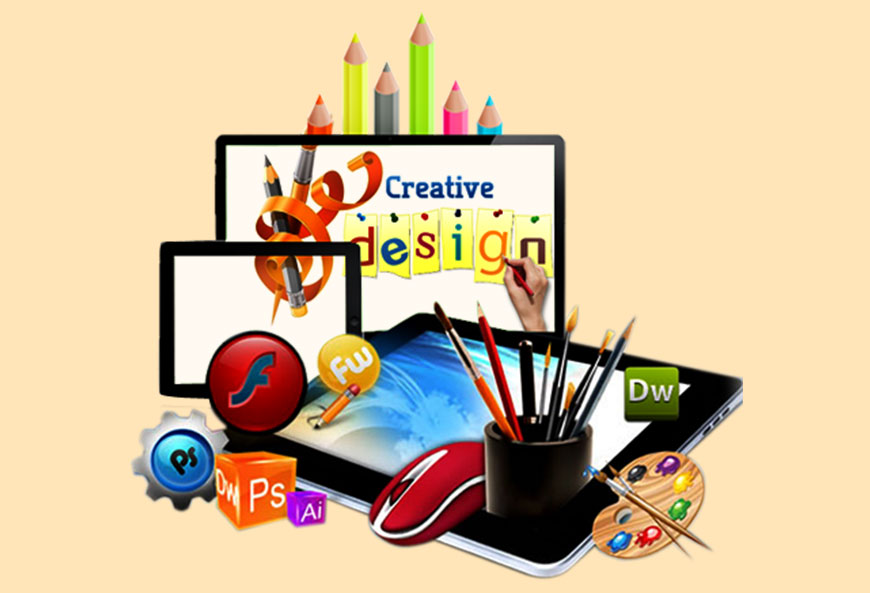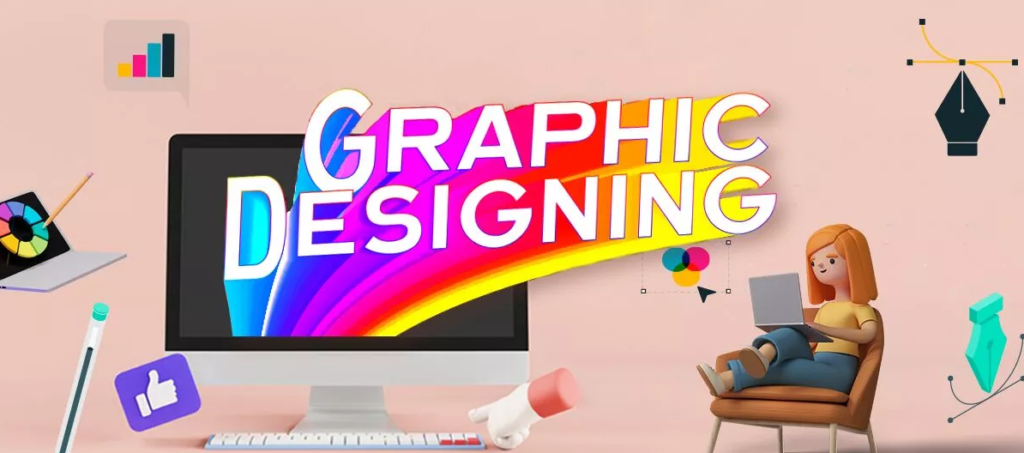How Can You Master the Fundamentals of Creative Graphic Design?
Graphic design is an essential skill in today’s digital world. Whether you’re a business owner, a marketer, or an aspiring designer, mastering the fundamentals of graphic design can make a significant difference in your ability to communicate visually. As a field that blends creativity with technical proficiency, graphic design requires not just an eye for aesthetics but also an understanding of design principles and the right tools. If you’re looking to master the fundamentals of creative graphic design, taking graphic designing courses in Lahore can provide the structured learning and hands-on experience you need. Here’s your guide to getting started and building a solid foundation.

1. Understand the Basics of Graphic Design
Before diving into complex projects, it's important to understand what graphic design is at its core. Graphic design is about creating visual content to communicate messages. Designers use typography, images, shapes, colors, and layouts to convey ideas effectively.
The first step to mastering graphic design is familiarizing yourself with the key principles that guide it. These include:
- Balance: This refers to the distribution of elements within a design to create a sense of stability. There are two types of balance: symmetrical and asymmetrical.
- Contrast: This principle involves using differences in color, size, or shape to create visual interest and highlight important elements.
- Alignment: Aligning elements in a design creates a clean and organized look. It ensures that everything is neatly positioned relative to one another.
- Repetition: Repeating elements, such as colors, fonts, or shapes, can help create a cohesive design.
- Proximity: Grouping related items together to create relationships between them.
- White Space: Also known as negative space, white space is the empty area around and between elements in a design. It’s crucial for making designs feel balanced and uncluttered.
By mastering these basic principles, you’ll be well on your way to creating designs that are both aesthetically pleasing and effective.
2. Learn to Use Graphic Design Software
In today’s design world, software tools are indispensable for creating professional-grade work. The most popular tools for graphic design include Adobe Photoshop, Illustrator, InDesign, and Canva. While each of these tools has its own specific strengths, it’s essential to learn at least the basics of these programs to succeed as a graphic designer.
- Adobe Photoshop: Ideal for photo editing, digital painting, and manipulation. It’s a must-have for designers focusing on image-heavy projects like posters, advertisements, and websites.
- Adobe Illustrator: Best for vector-based design, such as logos, icons, and illustrations. It allows you to create scalable designs without losing image quality.
- Adobe InDesign: This tool is widely used for print design, including magazines, brochures, and book layouts. It’s the go-to software for projects that involve complex layouts and typography.
- Canva: An easy-to-use design tool that’s perfect for beginners and non-designers. While it lacks the advanced features of Adobe software, it’s an excellent option for quick, simple designs.
Mastering these tools will give you the technical ability to execute your creative ideas and produce high-quality designs.
3. Develop Your Typography Skills
Typography is a fundamental aspect of graphic design. The way text is arranged can completely change the tone and effectiveness of your design. Understanding typography will help you choose the right fonts, sizes, and spacing to enhance your message.
Here are some key typography concepts you should know:
- Font Selection: Different fonts convey different emotions and messages. Serif fonts (e.g., Times New Roman) are often used for traditional, formal designs, while sans-serif fonts (e.g., Helvetica) are more modern and clean. Script fonts (e.g., Brush Script) can convey elegance or creativity.
- Hierarchy: Establishing a visual hierarchy through font size and weight ensures that important information stands out. For example, headings should be larger and bolder than body text to grab attention.
- Kerning, Tracking, and Leading: These terms refer to the space between letters (kerning), the space between all characters in a word (tracking), and the space between lines of text (leading). Mastering these elements will make your text more readable and visually appealing. If you're looking to enhance your typography skills, consider enrolling in online graphic design courses, which often cover these important aspects of design in detail.
By honing your typography skills, you’ll be able to use text as a powerful design element, helping your designs stand out and communicate more effectively.

4. Study Color Theory
Color is one of the most powerful tools in graphic design, as it can evoke emotions, establish moods, and draw attention. Understanding color theory is essential to choosing the right color palette for your projects.
The primary colors are red, blue, and yellow, from which all other colors are derived. Some important color concepts include:
- Complementary Colors: Colors that are opposite each other on the color wheel (e.g., red and green) create a high contrast, vibrant look.
- Analogous Colors: Colors that are next to each other on the color wheel (e.g., blue, green, and yellow) create a harmonious and cohesive feel.
- Monochromatic Colors: Variations of the same color can create a calm and uniform look.
- Warm and Cool Colors: Warm colors (reds, oranges, yellows) evoke energy and warmth, while cool colors (blues, greens, purples) convey calmness and serenity.
By understanding how colors interact, you can create designs that resonate with your audience and enhance the message you’re trying to convey.
5. Practice Layout and Composition
The arrangement of elements on a page is a crucial aspect of graphic design. A well-composed layout ensures that the design is visually engaging and easy to navigate.
Here are some layout and composition principles to keep in mind:
- The Rule of Thirds: This principle divides a design into nine equal sections using two horizontal and two vertical lines. Placing important elements along these lines or at their intersections can create a balanced and dynamic composition.
- Grid Systems: Grids help create structured layouts by providing guidelines for the placement of design elements. They ensure consistency and alignment across a design.
- Focal Points: Every design should have a focal point, which is the element that draws the viewer’s attention first. Use contrast, size, and placement to highlight this element. If you're looking to learn how to effectively create focal points and more design principles, enrolling in the best graphic designing institute in Lahore can provide you with the right guidance and hands-on experience to enhance your design skills.
The goal of layout and composition is to guide the viewer’s eye through the design in a logical and visually appealing way.
6. Explore Design Styles and Trends
Graphic design is an evolving field, and staying current with design trends is crucial for creating relevant and appealing work. While it’s important to have a timeless foundation, embracing current styles can help you appeal to modern audiences.
Some popular design trends include:
- Minimalism: Focuses on simplicity, with plenty of white space and a limited color palette.
- Flat Design: Emphasizes 2D elements without the use of gradients or shadows.
- Retro and Vintage: Drawing inspiration from past design eras, these styles use nostalgic colors and typography.
- 3D and Isometric Design: Involves creating depth and dimension in designs, often used in digital product designs and illustrations.
By experimenting with different styles, you’ll learn how to adapt to various design needs and create more engaging projects.
7. Get Feedback and Keep Practicing
Mastering graphic design is a continuous learning process. The more you practice, the better you’ll become. Regularly seek feedback from other designers or mentors to identify areas of improvement and refine your skills.

Conclusion
Mastering the fundamentals of creative graphic design requires dedication, practice, and an understanding of key principles. By learning the basics of design, becoming proficient with design software, developing your typography and color skills, and keeping up with trends, you can build a strong foundation for a successful graphic design career.
If you’re ready to take your graphic design skills to the next level, skills up academy offers a variety of comprehensive courses that can help you enhance your creativity and technical expertise.
Contact
Ready to take the next step? Get in touch with us at 0321 1111 218 and start your learning journey today.












